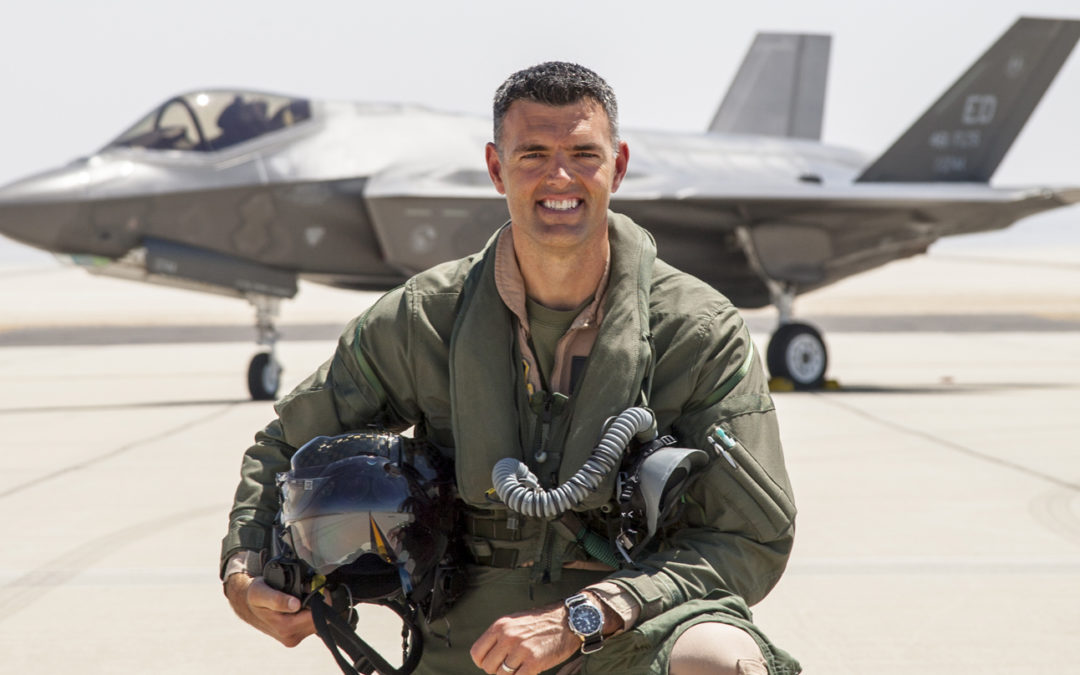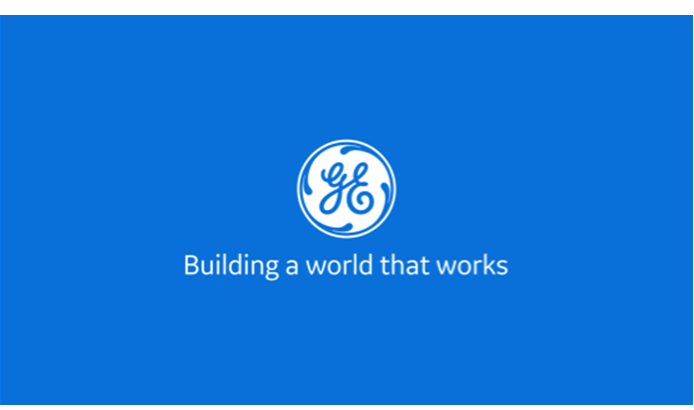

HE’S GOT THE RIGHT STUFF
Growing up, Jon Ohman knew he wanted to follow in the footsteps of test pilot Chuck Yeager, the first person to fly faster than the speed of sound. Yeager and contemporaries like Bob Hoover “established what it means to be a test pilot,” Ohman says. “They were pushing the boundaries of what humans were doing in the air.” After stints in the Marine Corps in Iraq and Afghanistan, then as a military test pilot, Ohman landed at GE. Nowadays you’ll find him in the cockpit of a modified Boeing 747-400 that the company uses to test its new engines — including the GE9X, the world’s largest engine.
Ohman, what an aviator! “It was certainly exciting to be the first person to fly the largest engine in the world, to be part of an aviation first,” Ohman says. “But it’s a really humbling experience, too.” And a feat that a test pilot can’t pull off alone, no matter how daring or talented. Ohman flies with 15 to 20 flight engineers and plenty of computers that can measure and modify various engine parameters in flight. And before the 747-400 ever takes off, Ohman and his crew go through an elaborate process that involves ground tests, simulations and various other prep work. The GE9X was designed for the Boeing 777x, but Ohman’s got another satisfied customer closer to home: his daughter, Emily, who says she’s not scared of airplanes because “my daddy tests them and makes sure they’re safe.”
Learn more about Jon Ohman’s high-flying career here.
OVERCOMING THE OPIOID CRISIS
At Seafood Sam’s, a family-friendly restaurant in Cape Cod, Massachusetts, one in five employees is in recovery from an opioid use disorder. In fact, business president Michael Lewis has struggled with addiction himself — and realizes the importance of creating an environment that affords his staff flexibility for their recovery and trains them to identify signs of relapse. Examples like Seafood Sam’s are part of an emerging understanding that the workplace can be a valuable site for combating the opioid epidemic.
A helping hand: “This is very much a workplace issue — not just a problem on the street corner but within our four walls,” said David Barash, executive director of the GE Foundation and a board member at RIZE Massachusetts, a nonprofit devoted to reducing the stigma around opioid use disorder that is supported in part by funding from the GE Foundation. Two recent RIZE reports offer startling statistics on the consequences of addiction and methods to offer assistance and reduce stigma. Because 55 percent of people with opioid use disorder are employed full-time, employer efforts to undermine the epidemic by supporting their employees could have a tremendous effect.
Read more about Massachusetts’ efforts to fight the opioid crisis here.
HEART-HEALTHY IMAGING TECHNOLOGY
Relatively rare and accompanied by few warning signs, congenital heart defects are never easy to diagnose. Doctors find the problem even more vexing when they’re dealing with the hearts of developing fetuses, which can be as small as an olive. But new technology, developed at UCLA’s David Gessen School of Medicine and available on GE Healthcare’s Voluson ultrasound machine, can make the imaging of fetal hearts easier.
Here’s looking at you, kid: Using the new software, called fetalHQ, clinicians are now able to examine the size, shape and contractility of the fetal heart with ease. “We’re now able to identify abnormal function, shape and size of the heart in less than 3 minutes — things we couldn’t do previously in such a comprehensive manner,” said Dr. Greggory DeVore, the UCLA specialist who developed the software. That’s making possible the diagnosis of conditions like coarctation of the aorta, which forces the heart to pump harder.
Find out what else fetalHQ can do here.
COOLEST THINGS ON EARTH ?
1. Microorganism Espionage
The U.S. military is looking at ways to genetically modify aquatic microorganisms to detect enemy submarines in the ocean. For example, the bugs could be tweaked to give off electrons in the presence of a foreign substance like exhaust fumes or traces of metal.
2. Power Suits<
A team at England’s Nottingham Trent University has found a way to embed solar cells “the size of a flea” into yarn that could be sewn into clothing — meaning you might someday be able to power your smartphone simply by putting on a shirt and stepping out into the sun.
3. Bluetooth Pills
Smartphones, meanwhile, could be used to control the release of medication ingested into the body: A team of doctors from MIT, Draper, and Brigham and Women’s Hospital have created a 3D-printed pill that, once swallowed, can be controlled via Bluetooth technology. That could help patients at home, for instance, maintain a strict dosing regimen.
Read more about this week’s Coolest Things on Earth here.
— QUOTE OF THE DAY —
“I love flying airplanes and I love doing flight test — and I really like being part of something that’s bigger than myself. It’s tremendously rewarding.”
— Jon Ohman, chief test pilot, GE Aviation
Quote: GE Reports. Image: Getty Images.
ENJOY THIS NEWSLETTER?
Please send it to your friends and let them know they can subscribe here.




